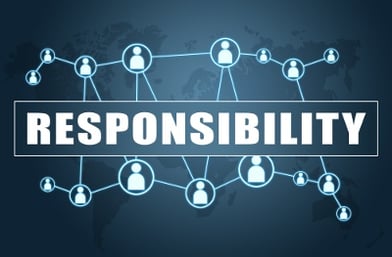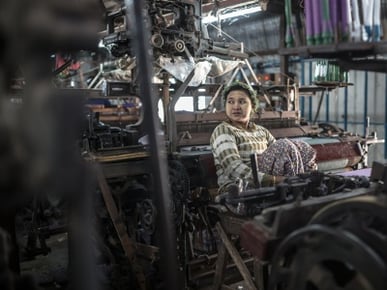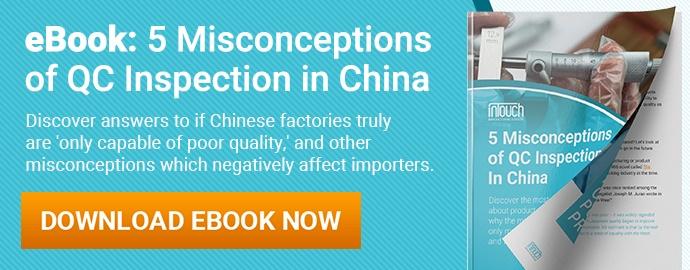Best in Manufacturing – April 22, 2018
Each Sunday, we publish a list of top articles and other content related to manufacturing in areas like quality control, product development, supply chain management, sourcing, auditing and law.
1. The future of fast fashion?
Do you mind getting measured at the tailor? If you want custom clothing, hopefully this process doesn’t bother you, because the evolution toward available-the-next-day (or even the same day) garments goes a step further. How would you like to be analyzed by a camera and computer while you’re naked in a changing room?
 Fashion trends are always changing and some consumers are willing to pay to get the latest and greatest apparel quickly. The on-demand fashion industry addresses this desire, and to make it a reality, entrepreneurs and factories are teaming up to provide value to those that want to be stylish.
Fashion trends are always changing and some consumers are willing to pay to get the latest and greatest apparel quickly. The on-demand fashion industry addresses this desire, and to make it a reality, entrepreneurs and factories are teaming up to provide value to those that want to be stylish.
The video below demonstrates this industry in action. As the video makes clear, having your measurements on a digital file is essential for the purpose of selecting and creating customized clothes. In the future, websites might have you select styles from a catalog and then use your digital file to manufacture them quickly thereafter.
Do you think this type of garment manufacturing poses any risks to importers that source garments from abroad? Let us know in the comments section at the bottom of the article.
How Cutting-Edge Technology Is Spurring On-Demand Fashion – The Wall Street Journal
2. A process for mass produced graphene
Graphene is a super advanced manufacturing material. Some of its many benefits include:
- Conducting electricity very well (even better than copper)
- 300x stronger than steel
- Very lightweight
- Super thin
- Flexible
- And more
All these impressive advantages of graphene make it a material with high potential for a wide variety of applications in manufacturing. But historically, one of the problems with graphene has been that it is difficult to make at scale, which has contributed to its steep cost and lack of extensive use.
But there might be promise on the horizon.
Researchers at the Massachusetts Institute of Technology (MIT) may have developed a scalable manufacturing process for entire graphene sheets. The new method produces graphene at a rate of five centimeters per minute.
How does the process work?
The process uses chemical vapour deposition, spooling a length of copper foil between two rolls and passing it slowly through two tubes. The first tube heats the foil to an ideal temperature, and in the second, a specific ratio of methane and hydrogen gas is pumped in. When this gas mixture hits the heated foil, graphene begins to form.
While this featured article talks about how this process is tailored for graphene filtration membranes, the MIT researchers responsible for its development may be able to tweak it for other applications. And when graphene for other uses becomes available, there’s no telling what product designers will be able to do with it.
In the next few years, with more graphene availability, importers and major companies might find themselves buying and selling innovative new goods interlaced with graphene. To get an idea of some potential products, you can view this infographic.
See the graphene manufacturing process for yourself and learn more about large scale graphene manufacturing by checking out the article in the link below:
MIT Researchers Develop Scalable Manufacturing Process for Graphene Sheets – Loz Blain, New Atlas
3. Advice for an ethical supply chain
If you have a supply chain, you probably understand that it’s sometimes difficult to manage all your suppliers and ensure ethical compliance. You might have great relationships with and visibility into first tier suppliers, but there might be second, third and even fourth tier suppliers making your products.
 When sourcing from abroad, this complexity is even greater simply for the fact that you’re farther from your suppliers and less able to check them for compliance to regulations and your own standards.
When sourcing from abroad, this complexity is even greater simply for the fact that you’re farther from your suppliers and less able to check them for compliance to regulations and your own standards.
But “they’re farther away and we can’t guarantee compliance” is not an excuse regulatory bodies and consumers are likely to accept. Maintaining compliance and ensuring an ethical supply chain may seem like a daunting task. Thankfully, however, this featured article provides advice on how to do just that:
- Avoid business interruption by cracking down on labor abuses: you need to remain aware of legislation in your home country addressing labor abuses and the penalties for violating it
- Review and update supplier contracts and codes of conduct: how can supplier contracts be improved to increase transparency and allocate risk?
- Take your supply chain diligence up a notch: try mapping your supply chain, like Nike, so that once you identify all your suppliers, you can audit them
- Do not ignore nonbinding standards: regulatory proposals, for example, might not yet be law (or may ever be law), but they signal a concern by the public that you should be aware of and plan for
- And more!
An ethical supply chain doesn’t just “happen”. Importers need to exercise due diligence over their supply chains not only to avoid legal and reputational damage, but to protect stakeholders and operate with integrity.
To learn about the other tips to have an ethical supply chain, check out the featured article in the link below:
10 Tips for the Ethical Supply Chain in 2018 – Caitlin C. Blanche, Amy L. Groff and John F. Sullivan, Supply Chain Dive
4. Walmart to enforce pollution control measures on suppliers in China
If you manufacture in China and distribute through Walmart, you could be squeezed by tighter sourcing requirements in the coming years.
Walmart’s president and CEO Doug McMillon recently committed to cutting 50 million metric tons of carbon emissions in China by 2030. That’s equivalent to the emissions generated by the annual electricity consumption of 40 million Chinese households.
China’s pollution is no small matter. Physicists at the University of California have found that 1.6 million people die every year from lung, heart and stroke problems caused by air pollution in China. And government officials have closed tens of thousands of factories there in an attempt to control the problem.
You might think the unfortunate reality of this pollution-crackdown trend will be higher manufacturing costs, as factories are forced to make expensive upgrades to their facilities. But in fact, some relevant “green” initiatives have already led to cost savings. Walmart’s plan builds on an existing energy efficiency program that saves participating Chinese factories $40 million per year.
What can you do to prepare for the general crackdown on polluting factories in China?
Walmart’s stance seems to be a proactive step to anticipate regulations that are long overdue in China and elsewhere. This is just one part of a much larger company pledge to reduce emissions by one billion metric tons worldwide by 2030.
An audit of your Chinese supplier’s facility can be an effective way to prepare for these impending regulations and stricter sourcing requirements. One such audit follows the international ISO 14001 standard and investigates a factory’s environmental management systems.
A China environmental protection audit is an alternative that more specifically assesses compliance with local Chinese law. This type of audit can help you avoid working with suppliers that are at risk of closing and other disruptions that could impact your supply chain.
For more details on Walmart’s emissions initiative, click the link to the full story below:
Xi Has a New Signup for China's Pollution Fight: Walmart – Editorial staff, Bloomberg News
5. Are Myanmar’s lower manufacturing costs worth the risks?
Imagine being a woman and working in a factory in Myanmar. You work 13 hours for just $3.40 a day, six days a week. The factory you work in is in a rural area outside the town where you live. You often have to walk home alone along unlit roads because you sometimes finish work so late into the night that there’s no other transportation available.
 And you’re not just worried about your safety during your commute home. Your coworkers sometimes harass or grope you. And one more thing: your boss regularly forces you to take a pregnancy test because they don’t want to pay you the mandated 98-day maternity leave if you get pregnant.
And you’re not just worried about your safety during your commute home. Your coworkers sometimes harass or grope you. And one more thing: your boss regularly forces you to take a pregnancy test because they don’t want to pay you the mandated 98-day maternity leave if you get pregnant.
According to one investigative journalist, this is the reality for many female workers in Myanmar’s factories.
Myanmar has seen manufacturing growth in recent years spurred on by a 3-to-7-year tax holiday and rising wages in more established manufacturing countries like China. But as experienced manufacturers begin trickling into Myanmar to set up shop, they don’t seem to be bringing acceptable labor practices with them. Local laws do little to protect workers because workers often don’t know their rights, and incidents often go unreported.
What’s the takeaway for importers curious about Myanmar’s lower costs and tax incentives?
You should probably think very carefully about the moral and compliance implications of working with a factory in Myanmar. Many retailers with strict sourcing standards, including Walmart, will terminate relationships with suppliers known to have these kinds of labor issues present in their supply chain.
Conducting a social compliance audit can help you limit your risk and avoid working with problematic factories. But issues like harassment and pregnancy testing can be hard to verify. Factory managers can often pressure or coach workers into answering an auditor’s interview questions a certain way.
To learn more about the conditions women workers are facing in Myanmar’s factories, check out the full article in the link below:
Myanmar's Women Face Routine Pregnancy Tests and Sexual Harassment in Sweatshops- Libby Hogan, abc.net.au
We’re constantly scanning the web for top manufacturing stories and news. If you’d like to submit an article for consideration for our weekly Best in Manufacturing, send us a message and let us know.







